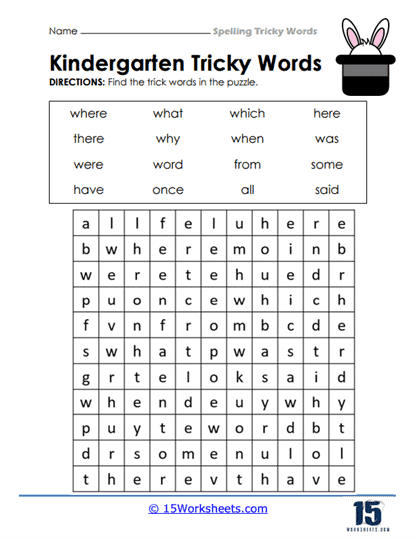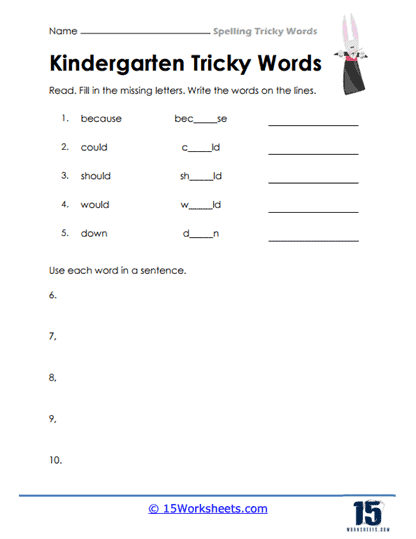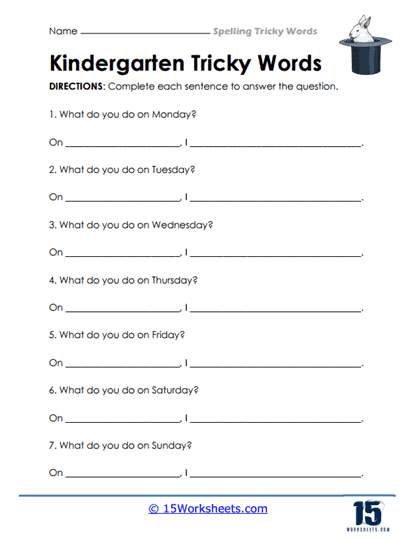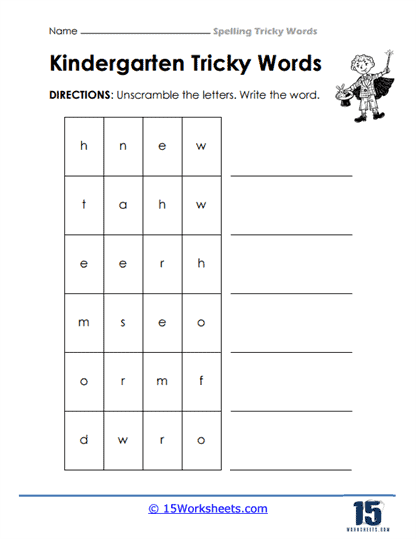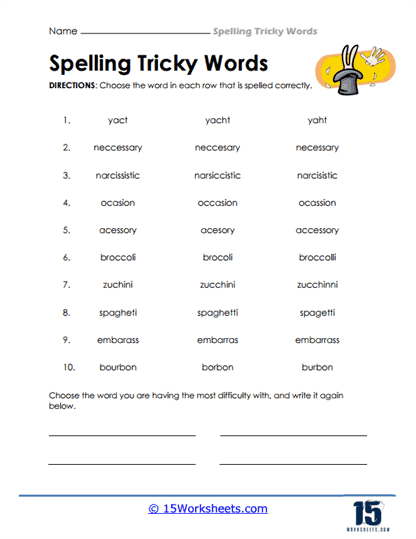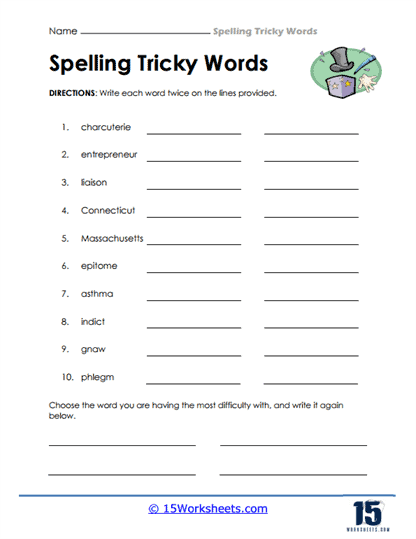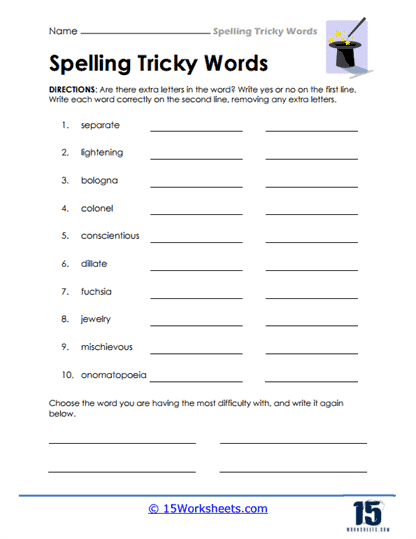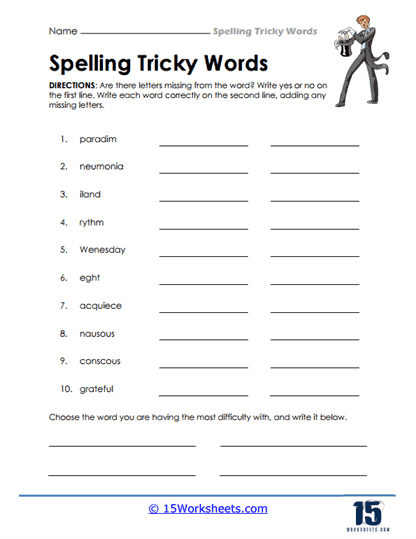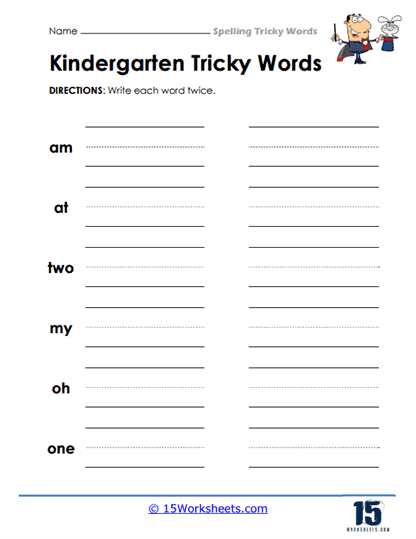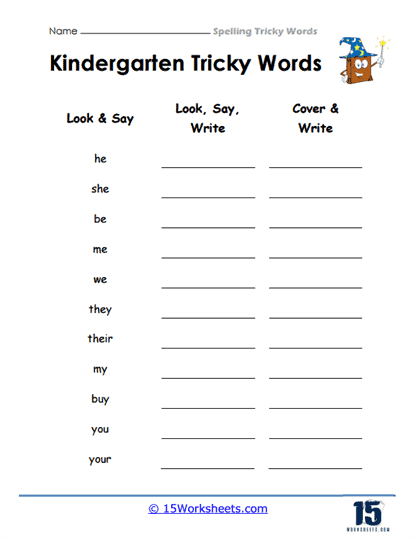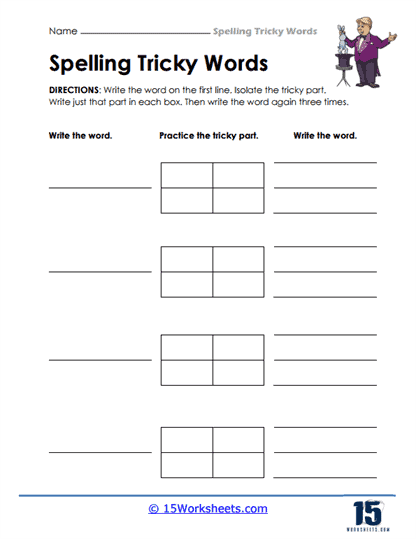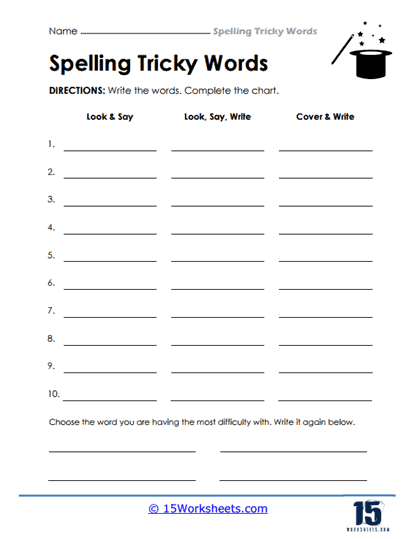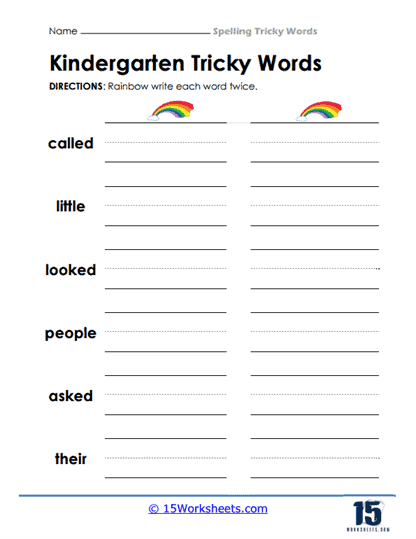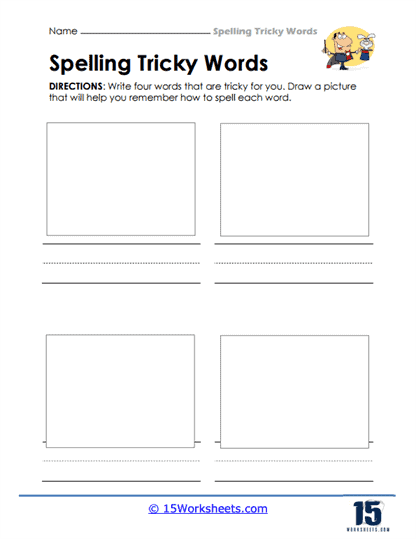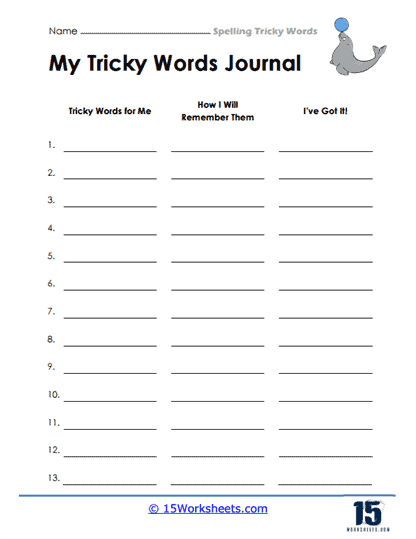Spelling Tricky Words Worksheets
All About These 15 Worksheets
This collection of worksheets will make spelling practice engaging and effective for kindergarten students, early learners, and anyone working to master foundational spelling skills. The worksheets provide diverse activities that help students tackle common spelling challenges, enhance vocabulary, and build confidence in written communication. These resources are perfect for teachers in the classroom, homeschooling parents, and students looking for fun, hands-on spelling practice.
The worksheets in this collection include various interactive and thoughtfully structured activities to address tricky words. The first worksheet, for example, challenges students to find tricky words such as “where,” “there,” and “some” in an engaging word search. This activity reinforces recognition of high-frequency words in a fun and visually stimulating way, making it easier for students to remember their spelling. Word searches are a fantastic way to support spelling retention while fostering problem-solving skills.
Another series of worksheets focuses on sentence completion, prompting students to write out their weekly routines, such as “What do you do on Monday?” and other days of the week. This activity blends spelling practice with sentence structure and creativity, encouraging students to think critically about their responses. It’s an excellent exercise to strengthen sentence formation while incorporating spelling skills into everyday language.
The collection also includes a word unscramble worksheet, where students are tasked with rearranging letters to form familiar words like “when,” “what,” and “from.” These exercises challenge students to analyze the arrangement of letters while reinforcing proper spelling patterns. By encouraging students to problem-solve and reconstruct words, the activity boosts memory recall and provides valuable practice with commonly misspelled terms.
A particularly engaging worksheet, in the set, asks students to identify missing letters in tricky words such as “rhythm,” “grateful,” and “Wednesday.” Students write “yes” or “no” to indicate if letters are missing, then rewrite the corrected word. This activity sharpens attention to detail, enhances spelling accuracy, and familiarizes students with words that are frequently misspelled due to silent letters or irregular spellings. By directly addressing these challenges, the worksheet builds foundational skills critical for future writing success.
Another type of worksheet within this collection involves isolating and practicing tricky parts of words. Students write the full word, identify the challenging segment, and repeatedly write that segment in a structured grid. For instance, they might isolate the silent “e” in “some” or the unusual spelling pattern in “once.” This technique breaks down the learning process into manageable steps, ensuring students can focus on and overcome specific difficulties.
In addition to these activities, the collection also includes other worksheet types to complement the examples provided. For instance, matching games could pair tricky words with their meanings or pictures, helping younger learners connect spelling with comprehension. Fill-in-the-blank exercises could challenge students to correctly spell tricky words within the context of short paragraphs, reinforcing both spelling and reading comprehension skills. Crossword puzzles featuring tricky words could provide a more advanced challenge for students ready to push their skills further.
For phonics-focused learners, phoneme-segmentation worksheets could help students break down the sounds of tricky words, linking phonics to spelling in a structured way. These worksheets guide students to separate each word into individual sounds, reinforcing their understanding of how letters and sounds interact in spelling. By focusing on phonemes, learners can better identify patterns and irregularities in tricky words, making them easier to spell over time. Additionally, this method helps bridge the gap between spoken and written language, giving students a deeper grasp of word construction. Another possible addition is a “tricky word rainbow writing” activity, where students trace over tricky words multiple times using different colored pencils to enhance memory retention through repetition and visual stimulation. This activity not only helps students focus on letter formation and word structure but also adds an element of fun and creativity to the learning process. The visual variety of the rainbow effect can also make the words more memorable, ensuring that students retain them longer.
To encourage independent learning, the collection might include a self-assessment worksheet where students track which tricky words they’ve mastered and which ones need further practice. This type of worksheet fosters self-reflection, allowing students to take ownership of their learning journey and build confidence in their abilities. Teachers and parents can use the completed assessments to tailor instruction and identify areas that need additional reinforcement. For a more interactive approach, “tricky word scavenger hunts” could ask students to find and write examples of tricky words in their favorite books, promoting real-world application. This activity encourages students to engage with texts actively, turning reading time into an opportunity for discovery and practice. It also reinforces the idea that tricky words are part of everyday language, making their mastery feel more relevant and achievable.
Each worksheet is designed with young learners in mind, featuring simple instructions, clean layouts, and engaging illustrations to maintain attention. Bright visuals and age-appropriate themes make the activities appealing, ensuring students stay motivated to complete them. By integrating clear directions, the worksheets also encourage independent work, enabling students to practice spelling without constant supervision. They provide ample opportunity for practice while ensuring students stay motivated. Repetition across different activities reinforces learning, helping tricky words become part of the student’s long-term memory. The variety of activities also accommodates different learning styles, making this collection an invaluable resource for any educational setting. Whether a child learns best through auditory, visual, or kinesthetic methods, these worksheets provide a balanced approach to ensure success for every learner.

